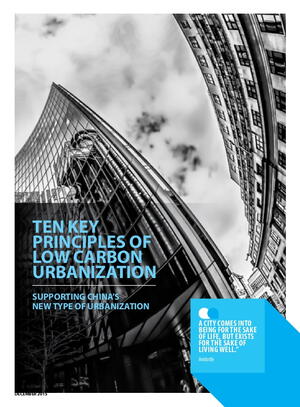
China’s rapid urbanization over the past thirty five years has boosted economic development, brought about fundamental social change, and helped to raise the living standards of both urban and rural populations. These achievements have been recognized worldwide. However, this process has also been characterized by intensive resource consumption and an emphasis on speed rather than quality of urbanization, which have negatively affected China’s natural environment. Going forward, China’s urban development must adopt a greener and low-carbon approach that is focused on efficient uses of land, energy, and other resources.
Recognizing the gaps in implementing low-carbon strategies and drawing on both international and Chinese experiences, we, 19 non-profit organizations (including ICMA and ICMA China Center), jointly recommend ten key principles of low-carbon urbanization for Chinese cities. These principles fall into three categories: Low-Carbon Urban Form, Resource Efficiency, and Inclusive Urban Governance. We believe that most Chinese cities have already resolved to take a green development approach that stresses rational spatial layout, green transport, low-carbon industry, renewable energy, and good governance, among other things. Therefore, we do not need to repeat the widely known high-level principles of sustainable urban development or to present an exhaustive list. Instead, we have identified specific principles that address the most important and pervasive weak points observed in Chinese cities. At the same time, these recommended principles are essential in their own rights and are indispensable features of a truly low-carbon city.
